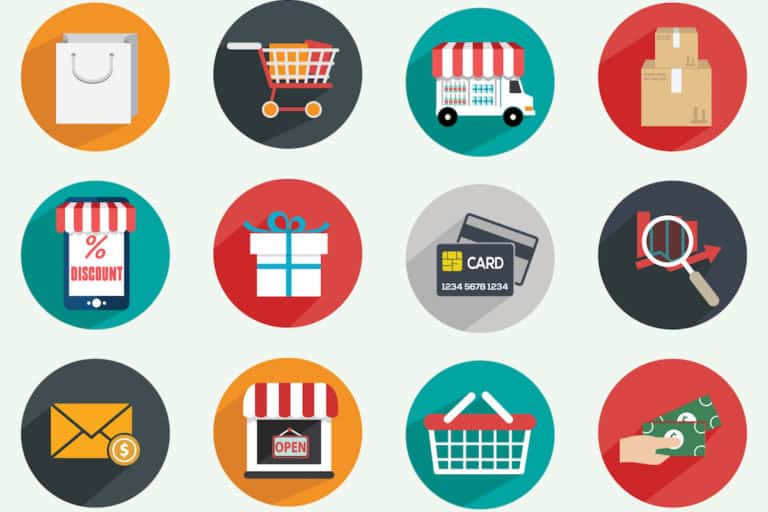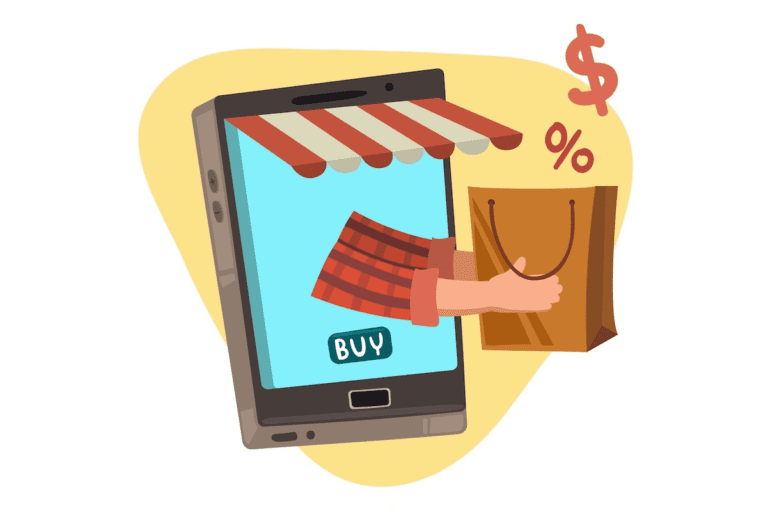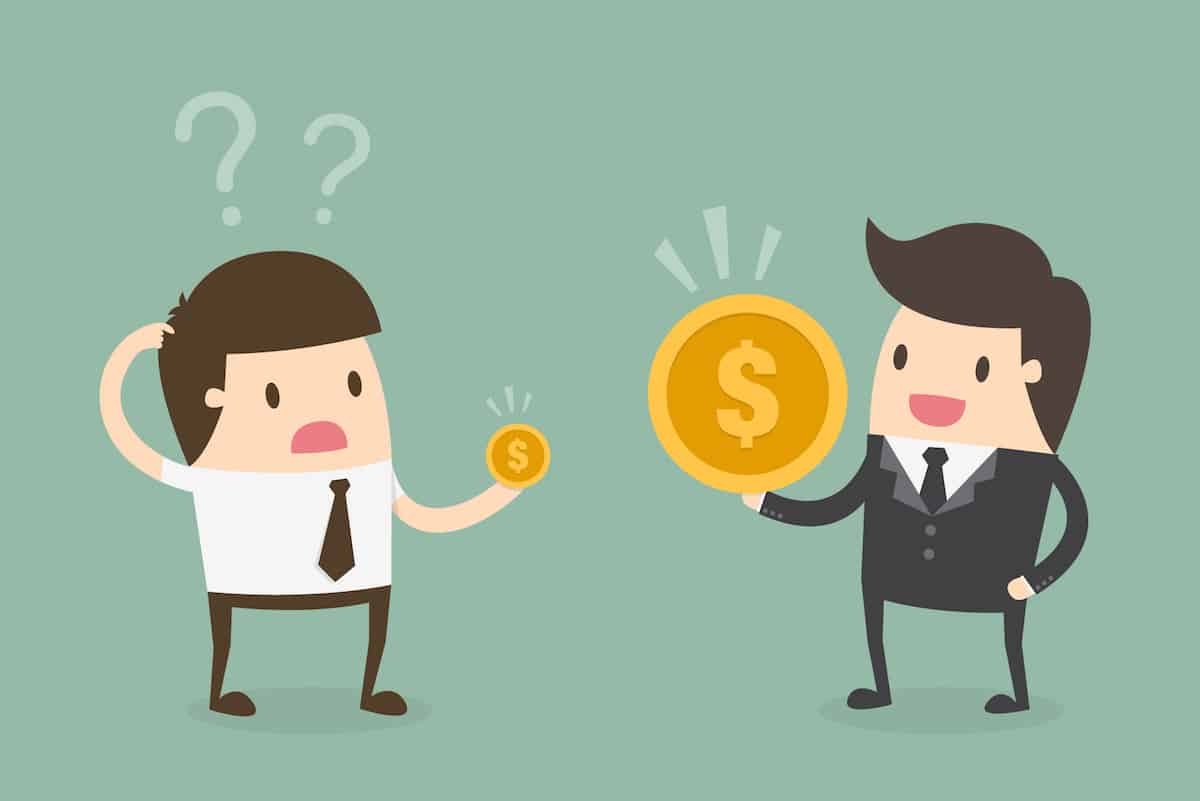
Every customer is like a drop of water through a funnel.
It’s normal for at least a few of those water drops to never make it through the funnel for one reason or another.
But what happens when you stop seeing water come out of the end of that funnel? What happens when conversions and sales slow to a noticeable trickle or stop altogether?
The issue could be a leak somewhere in your funnel.
Customers are not getting through your sales funnel the way they should be, and that’s a big problem.
Even the smallest leak in your sales funnel can lead to major losses down the road Share on XEven the smallest leak can lead to major losses down the road, so it’s important to be able to recognize leaks when they occur and patch them quickly.
The good news is that even if you have a major leak, it can be fixed.
Here’s what to know about spotting and plugging leaks in your eCommerce sales funnel that lead to conversion loss.
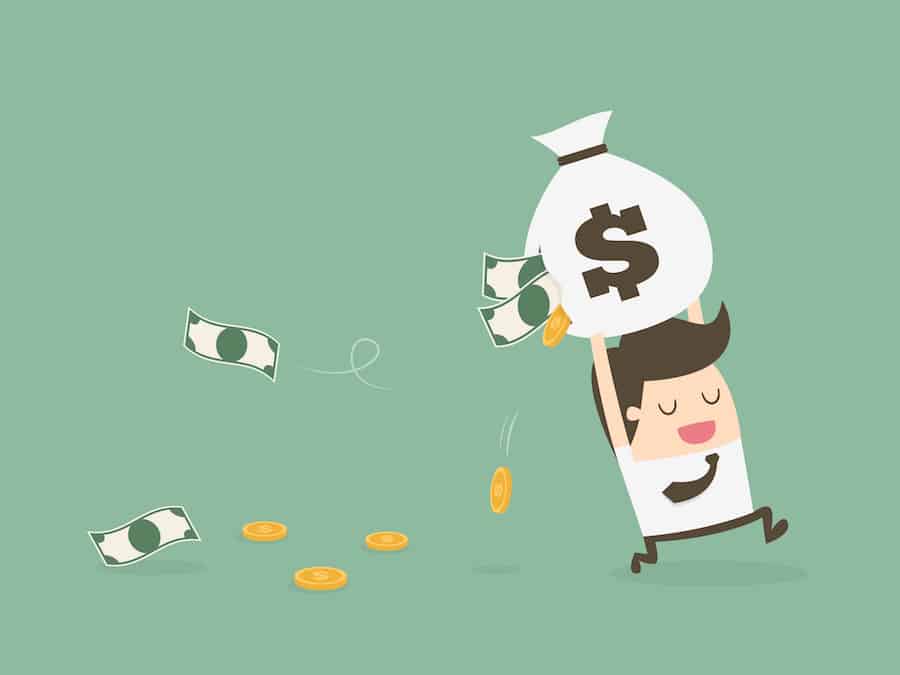
How the Ecommerce Sales Funnel Affects Lead Generation
Your eCommerce sales funnel, also known as a conversion funnel, is a way to visualize the process that potential customers go through before they make a purchase.
This involves every step of the journey, from brand awareness to decision making to after-purchase considerations.
A typical sales funnel looks something like this:
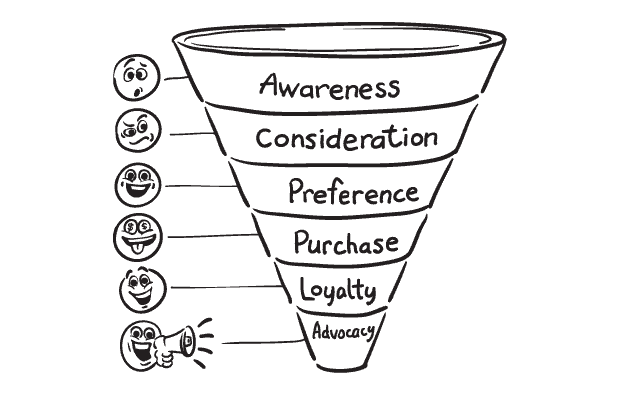
The goal of the funnel is to get people through one stage and into the next. Each time they transition from one stage, it’s considered a conversion.
If your conversion rates are high, this means that people are moving through your funnel at a healthy rate. In other words, no leaks are happening and the funnel is working as it should.
If your conversion rates are low, however, something isn’t going as planned.
Either people are missing your funnel completely or they are getting out of the conversion process at one or more stages.
There are five main stages where potential leaks can occur:
- Awareness – This is where potential customers become aware of your brand, product, or service. If there’s a leak here, it’s usually one related to traffic. No one knows you exist or how to find you.
- Consideration – This is where your value proposition should pique someone’s interest. If there’s a leak, it means that no one knows why they should buy from you.
- Preference – This is where potential customers determine whether or not your product or service can meet their needs. If there’s a leak here, it’s because they don’t know how your value proposition relates to them.
- Purchase – This is the biggest conversion point: where they buy from you. If there’s a leak here, there may be something wrong with the way your purchase system is set up, or other factors like price or shipping costs.
- Loyalty and Advocacy – This is where customers purchase from you again, become loyal customers and share and promote your products and service with others. If there’s a leak here, it means that post-purchase strategies are failing.
Conversion rate optimization can happen at every stage in the funnel.
In order to ensure that no leaks are occurring, you have to understand why people leave at each stage and how you can improve your offerings to ensure that the move through the funnel seamlessly.
Identifying Leaks in the Ecommerce Sales Funnel
One of the issues with a leaky funnel is that you might not always know a leak is happening until it’s too late.
You might notice a drop off in sales here and there, and then suddenly have a month where sales are drastically low.
Does that mean that sales dropped overnight? It’s possible.
It’s more likely that a small leak has been growing but you’re just noticing it now.
That’s why it’s important to regularly monitor your funnel for even the smallest of changes to ensure that there are no surprises down the line.
Here are a few steps you can take to spot leaks in your funnel.
Step 1: Start Tracking Your Data
If you’re not already tracking your conversions, you should be.
Data is always a prerequisite for any aspect of conversion rate optimization.
A few of the most popular analytics tools for watching your eCommerce sales funnel data include:
- Google Analytics (Free)
- KISSmetrics
- MixPanel
These tools will help you analyze your engagement and customer behaviors for signs that something isn’t working right.
Step 2: Set Up Your Sales Funnel
Do you know what your online funnel actually looks like?
Your site may have multiple funnels, but it’s important that they all point people somewhere. Your website doesn’t exist solely for information, it is your sales funnel.
For example, if someone lands on a blog post, where do they go next?
If they’re on your homepage, how do they get to the purchase page? It’s not just about navigation, either – what compels them to go to the purchase page or sign up for your demo?
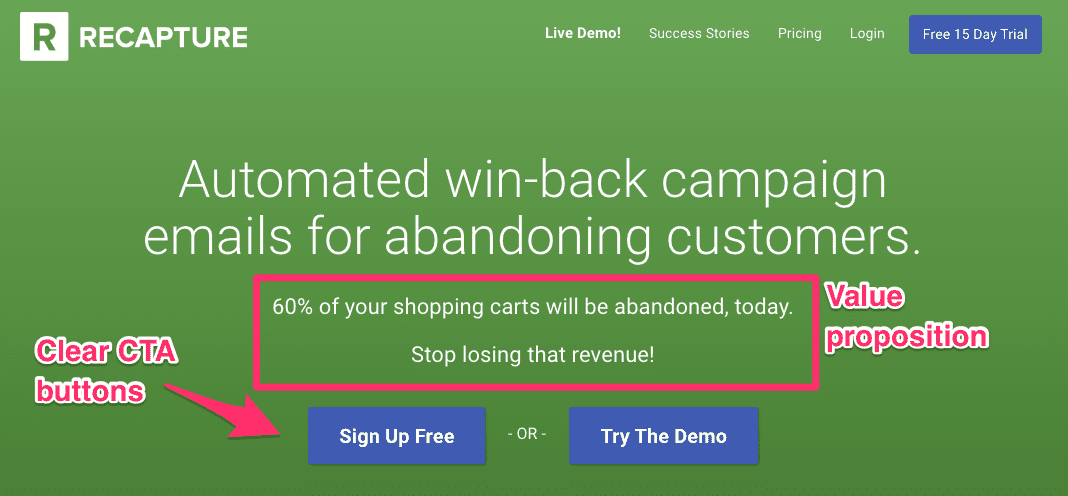
Every page on your site should be created intentionally, with the eCommerce sales funnel in mind.
Step 3: Spot the Leaks
Just about any step of any funnel can be optimized to convert better.
But spotting leaks isn’t always easy.
Instead of randomly testing your site or choosing spots where you think a leak might be happening, you want to go about the process strategically.
Use a tool like Crazy Egg to monitor your site for other small changes.
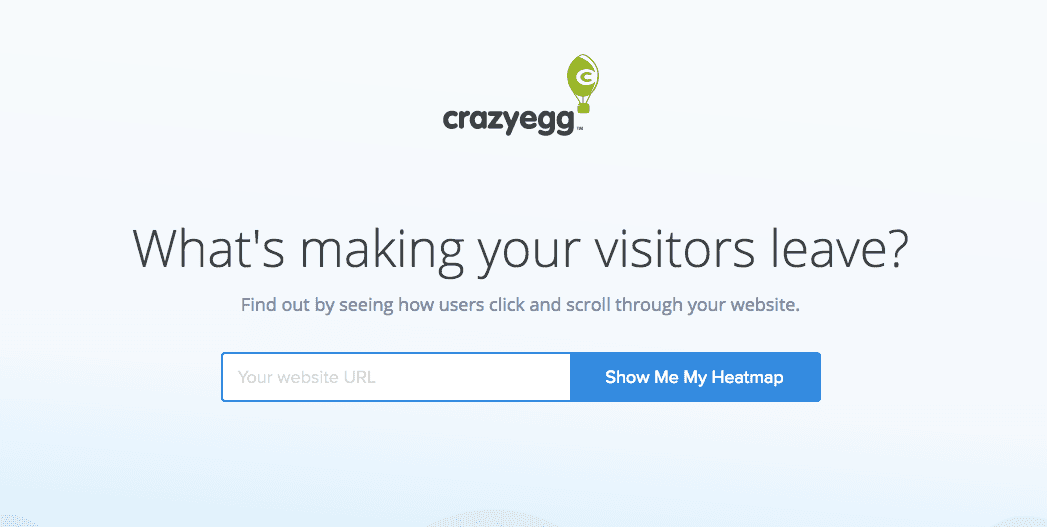
Crazy Egg gives you a heatmap of your site which shows you which areas are grabbing the most attention and which areas are being ignored.
This can help you identify specific design flaws or copy on your website that might be driving away conversions.

How to Stop Sales Funnel Leaks
Once you’ve gathered all your data and you understand how your eCommerce sales funnel is supposed to work, you will need to figure out how to stop any leaks that you notice along the way.
Here’s what to look for:
1. Plug leaks at the top of the funnel
At the top of the conversion funnel, the focus is on creating awareness and exposure of your brand and product.
Two of the biggest leaks here include not getting enough traffic to your site and not targeting the right people.
If they don’t know you exist, they can’t buy. If they don’t think you can help them, they won’t buy.
Determine whether you are targeting the right people, make sure your message is relevant, and boost traffic to your site with different marketing methods, like content marketing and social media outreach.
2. Plug leaks in the middle of the funnel
Once you’ve identified that you’re targeting the right traffic with relevant and clear messaging, you’ll want to look at the quality of leads moving forward through the funnel/
The most common leaks here include unqualified or unnurtured leads or other friction during the signup or purchase process.
A study by IDG revealed 61% of marketers report problems generating high-quality leads for their organization.
Again, look at your data. Test your value propositions. Make sure people understand the value that you can provide them. Give them a “why” to buy instead of just showing them how to buy.
You should also be reducing any sign-up friction. This means making sure your forms are optimized and that your website loading speed is fast and there are no surprises during the purchasing process.
3. Plug leaks at the bottom of your funnel
Just because someone buys from you once doesn’t mean your job is done.
You need to turn one-time buyers into loyal customers if you want to continue to grow.
Leaks can occur here if there is trouble with your production process, shipping times are slow, changes occur to inventory, or there are other issues that prevent your customer service from being 100%.
Consider opting in for better customer-service features, like live chat or an automated customer service support center.
You may also consider retargeting these customers with email marketing and ensure that people stay aware of the products and deals you have to offer, like this example from Chubbies.
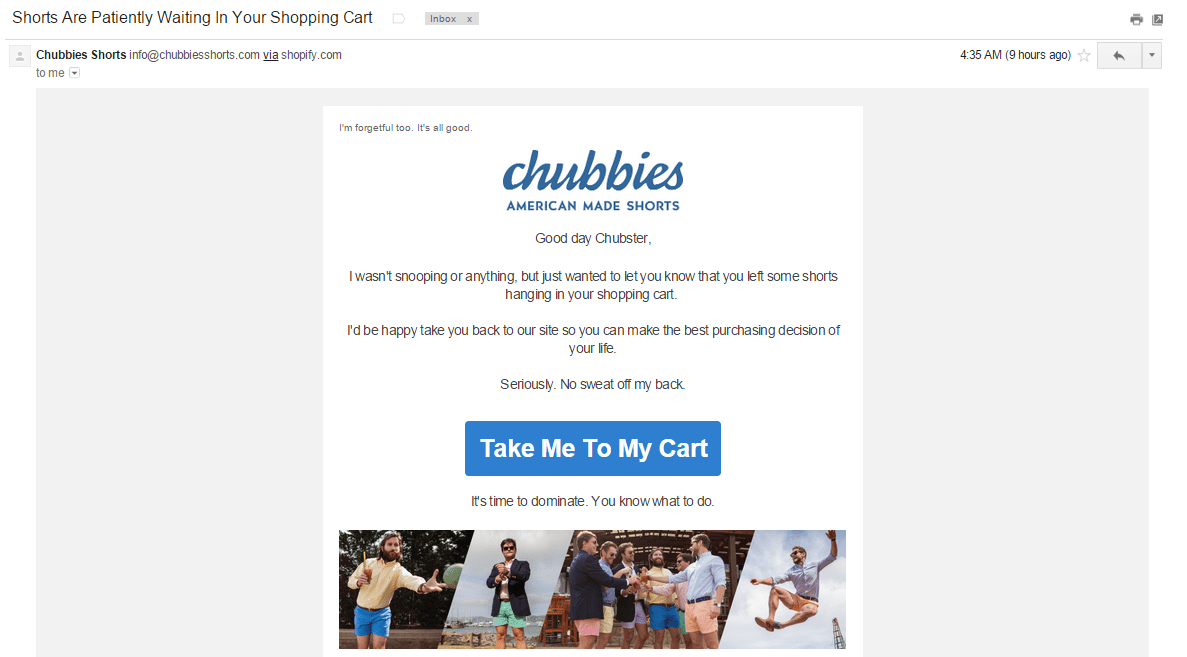
Final Thoughts
The goal is to identify leaks and create plugs at every stage of the funnel.
Each stage of the funnel will have its own unique needs. It’s not one-size-fits-all. Just like your customers are not one-size-fits all.
Take some time to look through your data and ensure that all of your leaks are plugged and monitor for any sudden changes that may indicate a leak has gotten out of control.
Check your data regularly so that nothing surprises you.
SaveSave
SaveSave

